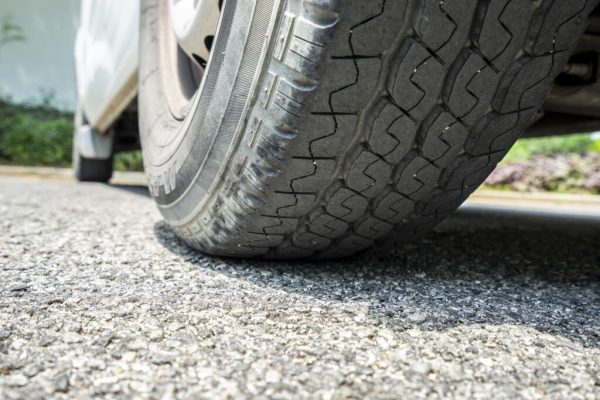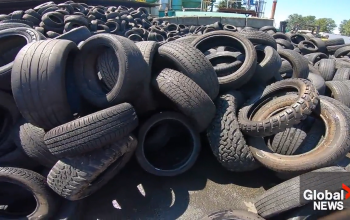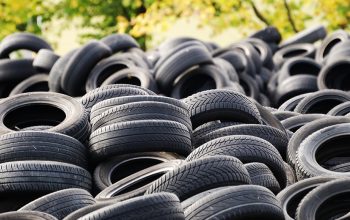6PPD in Tires: What We Know So Far
As the tire recycling organization in BC, we are often asked about 6PPD and 6PPD-quinone (6PPD-q). As these are directly related to the chemical used in the manufacturing of tires, not the recycling of tires, we feel these questions are better answered by the experts and those who are actively engaged in resolving the issue. Below, we’ve included some useful information and resources to help provide insight into the topic. We will continue to update this page as more information is released.
Where is the best place to get more information on 6PPD and 6PPD-q?
In North America, the key resources for information are:
United States Tire Manufacturing Association (USTMA)
The USTMA is the national trade association for tire manufacturers that produce tires in the US. The USTMA website speaks directly to the work being done by this organization and provides a lengthy list of articles and research projects underway regarding 6-PPD and 6-PPD-q.
The Tire Industry Project (TIP)
Founded in 2005 as a voluntary-led CEO initiative, TIP consists of 10 major tire manufacturers responsible for over 60% of global tire production. One of the areas of focus for TIP is researching Tire and Road Wear Particles (TRWP) and the website contains a significant library of the research underway.
The California Department of Toxic Substance Control (DTSC) has been leading the way in requiring tire manufacturers that supply tires into the state to find an alternative to the use of 6PPD in tires. The initial press release can be found here. The results of Part 1 of this alternative analysis can be found on the USTMA website, with an excellent summary found here.
Although the conversations around 6PPD and 6PPD-q are most prevalent on the West Coast of the USA, it is important to recognize that this is an issue and discussion happening around the world. The European Tire Recycling Association and Tyre Stewardship Australia are just two examples.
Explore additional resources and insights from TIP at tireparticles.info.
Background:
In December 2020, a report published by researchers at the University of Washington and the Washington Stormwater Center (Tian et al.) identified a 6PPD transformation product, called 6PPD-quinone, and concluded that it is toxic to coho salmon and other aquatic species. This chemical is transferred to the environment through tire road wear particles.
Since this study, research has been ongoing with various organizations looking at ways to mitigate the tire road wear particles from entering the waterways as an alternative to 6PPD in the manufacturing of tires. This research is not limited to Canada or the US; work is happening around the globe.
What is 6PPD and 6PPD-quinone (6PPD-q)?
6PPD is an antioxidant and antiozonant chemical used in the manufacturing of tires that helps prevent the degradation and cracking of rubber compounds caused by exposure to oxygen, ozone and temperature fluctuation. Protection materials, such as 6PPD, are essential for tire performance and safety. At present, 6PPD presents a critical and essential use in tires.
6PPD-q is a transformation product created from 6PPD in a unique environment through the combination of friction, high ozone concentrations, and UV exposure. The chemical is then transferred to the environment through tire road wear particles—particles that can be as small as 1 nanometer.
What are Tire Road Wear Particles (TRWP)?
TRWP can be made up of a mixture of dirt, dust, road markings/paint, exhaust particles, tire tread and other foreign materials on the road. The production, size and makeup of these particles are influenced by factors such as driving behaviour, road condition and road dust material and debris. Stormwater carries the TRWP into nearby rivers and streams.
To learn more about TRWP, visit tireparticles.info/press-corner/.
You say work is being done to find an alternative to 6PPD, but can anything be done now while research is ongoing?
While the important work is being done by the tire manufacturers looking for a 6PPD alternative, considerable research is underway to test waters and find ways to mitigate the TWRP entering the waterways. A few examples below:
- Improved TRWP quantification method validated in TIP-supported study
- Understanding 6PPD and 6PPD-Quinone
- Protecting Salmonids from Tire Wear Toxicants: 6-PPDQ Post-Workshop Summary 2024
- Scientists call for deeper investigation and standardization of methodologies for measuring and assessing tire wear emissions in first-of-its-kind “State of Knowledge” papers
- WSU team unlocks biological process behind coho die-offs
- New soil mix that strips salmon-killing chemical out of runoff water being tested in Bellingham
- Bridgestone develops cutting-edge tire and road wear particles collection method to understand environmental impact
- Scientists identify a potential breakthrough for treating salmon-killing tire chemical
- Tire industry project commitment to addressing tire and road wear particles
- Tire manufacturers consortium’s 6PPD alternatives analysis report receives notice of compliance from California DTSC, clearing way for stage 2
- US EPA develops 6PPD-q water testing
- UBC team probing tire chemical linked to salmon death wins $1.8M in funding
- New method measures levels of toxic tire particles in rivers
- UK: New tool detects toxic chemicals from car tires in freshwater systems
- EPA Releases Information that States and Tribes Can Use to Protect Local Fish from Toxic Tire Chemicals | US EPA
Note: This document will be updated regularly as TSBC becomes aware of any new information that is relevant to the issue.



